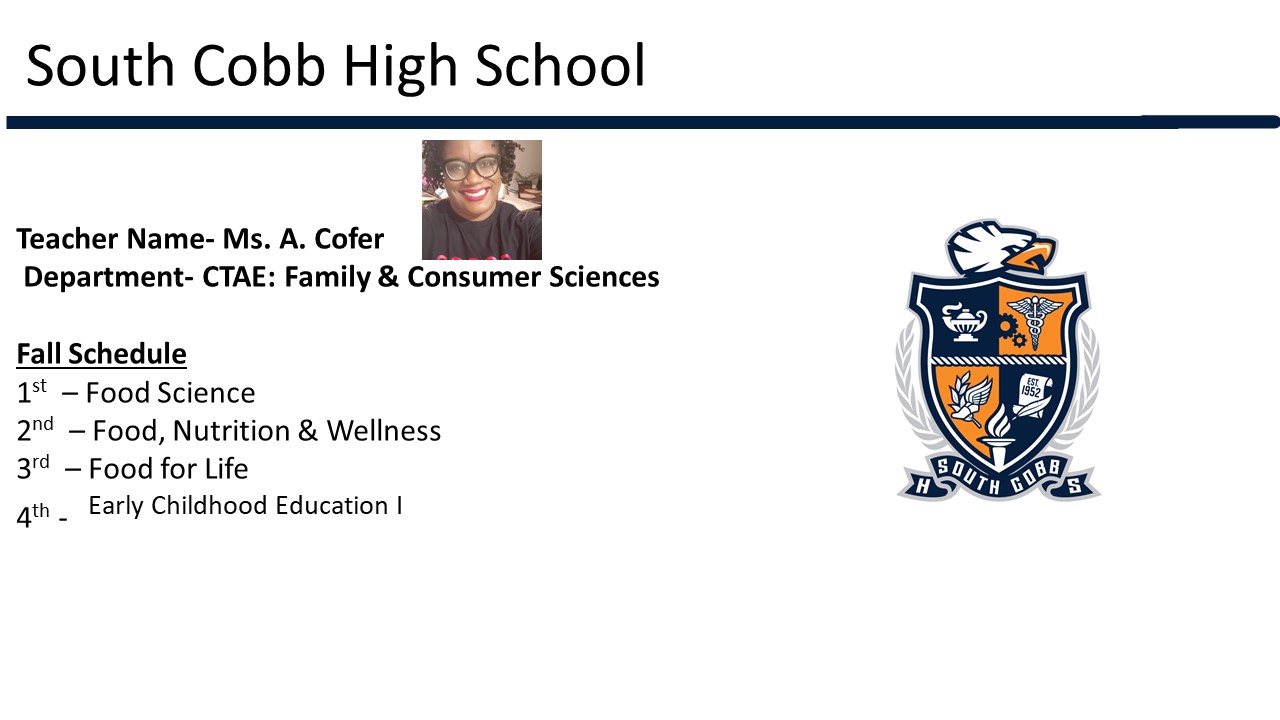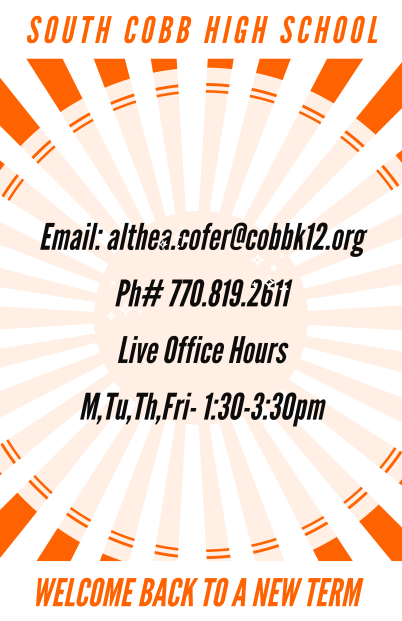EQ: What are the essential nutrients?
Work Session: 1. Complete DVD: Micro-nutrients-Vitamins,Minerals and Water
-Complete guided notes with the video
2. Independent Reading: Students will read one of three articles related to water and complete the Magazine Report Form ( Authors purpose, Summarize reading, Opinion of the article)
3. Chapter 9 Dietary Guidelines
Friday, May 2, 2014
Free Cook: Students will plan a menu, create a cooking group and prepare meal.
Wednesday, April 30, 2014
FNL: Thursday, May 1st -Friday, May 2, 2014
Standards: FCS-FNL-2. Students will
discuss the requirements of maternal and fetal nutrition during pregnancy.
Standards: FCS-FNL-2. Students will
discuss the requirements of maternal and fetal nutrition during pregnancy.
EQ: What are the changes throughout pregnancy for the
mother and developing fetus and what are the recommended nutritional
requirements?
Opening Warm-up AND/OR Activator (highlight
one): Bellwork Life Cycle (p.52). Students will read the prompt and
complete the student activity.
Teacher will show YouTube clip:
Pregnancy Tips - 1st Trimester Cooking & Nutrition
Work
Session:
1.
Prenatal Issues PowerPoint slides 13-27
·
Review
slides with students.
·
Have
them continue to fill in the blanks in their Prenatal Issues Study Guide.
·
These
slides show growth of the pregnant woman as well as the fetus. Real-life
comparisons are used for length and width of the embryo and fetus.
o
As
a lead-in to these slides, the teacher could pass out the everyday comparison
items from the Prenatal Issues
PowerPoint and have students separate them into months 1-9. While students will
be able to easily sort smallest to largest, manipulating these items will help
them get a sense of just how tiny the embryo is and what it will develop into
by the 9th month.
2.
Students will complete Case Study: A Healthy Pregnancy p. 261.
3.
. Students will prepare a first word
using the word “Drug” as it relates to taking any drugs during pregnancy.
Daily Homework: none
Friday, May 2, 2104
Work Session:1. Prenatal
Issues
PowerPoint slides 28-33
·
Review
slides with students.
·
Have
them continue to fill in the blanks in their Prenatal Issues Study Guide.
·
2.
Prenatal Issues
PowerPoint slides 34-36
·
Review
slides with students
·
Have
them continue to fill in the blanks in their study guides
·
Share
the website http://www.meriter.com/content/?cm_id=516 with students. It gives great
descriptions of common problems premature babies may face.
·
Students
should understand the dangers of teen pregnancy, not just the social stigma and
extreme life changes that are associated with it. Whole group: cloze reading Textbook-p.264-265:
Concerns related to Teen Pregnancy.
3. Students will work on second set of
Chapter 11 Vocabulary (prenatal issues)
Closing/Summarizer: YES/NO…
Do you think a caregiver’s attitude while feeding a baby can affect the baby’s
response to the food?
Homework: NONE
Sunday, April 27, 2014
Monday, April 28th
FNW: Agenda
1. Students will sign and date Substitute Agreement
Chapter 7 Nutrients from food to you
2. DVD: Nutrition Matters- complete Film Review (10 facts, 3 things apply to life)
3. Textbook p. 109- 1-6 (Vocabulary Review and Check for understanding questions) *write the questions*
4.
FNL Agenda
1. Students will sign and date Substitute Agreement.
Chapter 11 Nutrition across the Lifespan
2. DVD: Eating in Context-complete 4-2-1 (4 things I learned, 2 things that surprised me, 1 thing I can change)
3. Unpack the standard
4. Chapter 11 assignments
1. Students will sign and date Substitute Agreement
Chapter 7 Nutrients from food to you
2. DVD: Nutrition Matters- complete Film Review (10 facts, 3 things apply to life)
3. Textbook p. 109- 1-6 (Vocabulary Review and Check for understanding questions) *write the questions*
4.
FNL Agenda
1. Students will sign and date Substitute Agreement.
Chapter 11 Nutrition across the Lifespan
2. DVD: Eating in Context-complete 4-2-1 (4 things I learned, 2 things that surprised me, 1 thing I can change)
3. Unpack the standard
4. Chapter 11 assignments
Tuesday, April 15, 2014
FNL Chapter 4 Resource
Dietary Guidelines for Americans
http://www.cnpp.usda.gov/dietaryguidelines.htm
MyPlate.gov
http://www.choosemyplate.gov/
http://www.cnpp.usda.gov/dietaryguidelines.htm
MyPlate.gov
http://www.choosemyplate.gov/
FNL;Friday, April 18, 2014
Standards: : FCS-FNL-1.
Define and demonstrate an understanding of the components of a nutritious diet
by planning menus for different age groups using Dietary Guidelines for
Americans, other consumer dietary recommendations including MyPlate, and the
Exchange Lists for Meal Planning and Food Labels to plan menus.
Opening Warm-up AND/OR Activator (highlight
one): List five things that you will
find on a nutrition facts panel.
Work Session: Independent
Reading: Empty Calories foods vs. Nutrient –Dense Foods Article. complete
magazine report form (purpose, summary, opinion)
2. Activity: p.96. Empty Calories vs. Nutrient
Dense
3.
Students will read the prompt MyPlate Sevings and write lyrics for a
rap song or poem about using Myplate servings to cut down on fat and calories
in their diet.
4. Activity: Mad Scientist-
Students will draw a food that contains high nutrient density. *Share
responses*
-Extend your knowledge p.96
Closing/Summarizer: Students
will answer question: A Nutrition Facts panel indicates one serving of a food
product supplies 2 grams of dietary fiber, which is 8 percent of the Daily
Value. How many servings of that product would a person need to eat to consume
100 percent of the Daily Value for fiber?
(c.
12-13 servings)
FNL: Thursday, April 17, 2014
Standards: : FCS-FNL-1.
Define and demonstrate an understanding of the components of a nutritious diet
by planning menus for different age groups using Dietary Guidelines for
Americans, other consumer dietary recommendations including MyPlate, and the
Exchange Lists for Meal Planning and Food Labels to plan menus.
Work Session:1.
1. Complete and check DGA assignments for a grade.
{RF12p77} Students will give examples
of their favorite snack foods that are high in fat, sugar, and/or salt. Teacher
will write responses on board for class observation. Then students will
brainstorm a list of snack alternatives that are low in fat, sugar and sodium..
Teacher will discuss the value of choosing snack foods that support the two
basic themes of the Dietary Guidelines: 1) Maintain calorie balance over time
to achieve and sustain healthy weight. 2) Focus on consuming nutrient-dense
foods and beverages.
2. Students will complete “Catch
Nutrition Fever” students will respond to the yes/no questions and fill in the
thermometer to assess how closely they are following the DGfA. Students will
answer the evaluation questions to explore ways to change health risks and
promote wellness habits.
MyPlate
3. Students will answer: What are
the five food groups? (Textbook p94-.98 to discuss MyPlate food groups)
(Myplate.gov) Teacher will show
Youtube clip for audio explanation (remediation)
(Teacher
will use Myplate.gov to discuss food groups. Discuss foods and portion
sizes/calories. Show students how to naviagate the site for upcoming project.
*Teacher will show foods/portion; so students can see real portions.)
-Students will complete Lesson 2
MyPlate. Web based guided questions (10). Students will use the media center or
ipads.
4. MyPlate: WB Activity C Personal
Plate-Students will label groups of Myplate and give the recommended daily
amounts for each group. Then they will write the names of three of their favorite
foods from each group in the appropriate spaces on the activity.
FNL: Wednesday, April 16, 2014
Standards: : FCS-FNL-1.
Define and demonstrate an understanding of the components of a nutritious diet
by planning menus for different age groups using Dietary Guidelines for
Americans, other consumer dietary recommendations including MyPlate, and the
Exchange Lists for Meal Planning and Food Labels to plan menus.
Opening Warm-up AND/OR Activator (highlight
one): Bellwork:Students will read
prompt Calories and complete the student activity.
Work Session: Students will present Tactile activity.
2. Teacher will show the Dietary
Guidelines for Americans.gov website for future reference and real world
application.
3. Students will complete Lesson 1
Dietary Guidelines :Navigate to the Key Recommendations for the DGA ( Web
Lesson- students will use the media center or ipad cart) There are ten guided
questions.
3. Students will complete the
Promoting the Dietary Guidelines worksheet: Activity B p.20. They will pretend
to work for public relations company
that has been contracted by the USDA.. They will design various kitchen related
items to promote the DGfA
Daily Homework: Study for Chapter 4 Test
(Friday, April 25, 2014)
Monday, April 14, 2014
FNW: Monday, April 14, 2014
Standards: HUM-FNW-8 Compare
the causes and foods at risk for illnesses.
HUM-FNW-7 Analyze food safety and
sanitation procedures from production to consumption.
Opening Warm-up AND/OR Activator (highlight
one): Prep for the test.
Work Session:1. Students will take Unit 3 Test: Chapter 5 Food Safety
& Sanitation- Chapter 6 Kitchen Safety
2.
After the test students will work on Kitchen Equipment Worksheet and Small
Electrical Appliance worksheet. {Chapter 19 Kitchen Equipment}
3. Kitchen Equiment Crossword
Closing/Summarizer: List one
thing that surprised you about Food Safety & Sanitation
Daily Homework: none
Monday, April 7, 2014
FNW: Wednesday, April 9, 2014
Standards: HUM-FNW-8 Compare
the causes and foods at risk for illnesses.
HUM-FNW-7 Analyze food safety and
sanitation procedures from production to consumption.
Opening Warm-up AND/OR Activator (highlight
one): Nurturance p.17. Students will read the prompt and complete
the student activity.
Teacher will show YouTube clip: NBC
Show-Kitchen Fire Safety
Chapter 6 Kitchen Safety
Work Session: 1. Kitchen Safety PowerPoint {CTAE}.
Students will answer guided questions during presentation.
2. TEACH L3 p.TM87- Students
will be put into groups of 3 or 4 (small group) and assigned one type of
kitchen accident. Using the chapter material,
students will create a demonstration for the class on how to prevent
accidents of that type. {commercial}
Daily Homework:none
FNW: Tuesday, April 8, 2014 *Substitute*
FNW: Assignment
Sheet 1st-3rd
block: Tuesday, April 8, 2014
EVERY Student must read and sign the sub
agreement. Give back to the substitute * sign your name at the bottom with a new
date*
1.
Complete Chapter 6 Kitchen Safety packet *
turn in at the end of class*
2.
Complete Kitchen Safety 20 bloopers handout *turn in at the end of class*
3. Chapter 19
Kitchen Equipment Graphic Organizer-use textbook
4.
Chapter 19 Kitchen Equipment handout
5.
Chapter 19 Small Appliance handout
6. Kitchen Utensil crossword
FNW: April 8, 2014 Monday
Standards: HUM-FNW-8 Compare
the causes and foods at risk for illnesses.
HUM-FNW-7 Analyze food safety and
sanitation procedures from production to consumption.
•
ESSENTIAL QUESTION: What safety prevention practices should be a part of any kitchen?
Opening Warm-up AND/OR Activator (highlight
one): Students will answer three questions related to kitchen
safety.
Activator: Activity-Bloopers.
Students will have two minutes to write down as many “bloopers” or unsafe
actions in the kitchen. Each student will share “one” blooper and what makes
the action unsafe.
Work Session:
1. Common Assessment
2. Chapter 6 Kitchen Safety pkt.
3. Kitchen Safety Bloopers handout:
Identify the 20 mistakes.
Daily Homework: None
Sunday, April 6, 2014
FNL-Monday, April 7, 2014
UNIT NAME: Chapter 3: How Nutrients Become You
|
Standards: FCS-FNL-1 Students will design and demonstrate a nutritious diet.
a)
Identify common food
allergies and intolerance and their effect on menu planning, meal preparation,
and the selection of foods in the marketplace.
ESSENTIAL QUESTION: How do food allergies and food intolerances
affect meal planning?
Opening Warm-up AND/OR Activator (highlight
one): Tell one positive thing you done during the Spring Break.
Work Session: 1. Common
Assessment
2. Students will present Info-posters (Allergies/Intolerances)
List one surprising thing you
learned from the presentations.
Daily Homework: NONE
|
|
ALL Classes:
Monday, April 7, 2014
Instructional packets are due...
* 10 late points will be deducted everyday after 4/7/14*
Instructional packets are due...
* 10 late points will be deducted everyday after 4/7/14*
Subscribe to:
Posts (Atom)
CCSD Reopening Plan:
https://www.cobblearningeverywhere.com/
-
Name: _________________ Block: _____ Date: ___________ Food Allergies and Food Intolerances Info-Poster Directions: Research th...
-
Due: Tuesday, September 23, 2014 30% of final grade Food Allergies and Food Intolerances Info-Poster Directions: Research the a...


